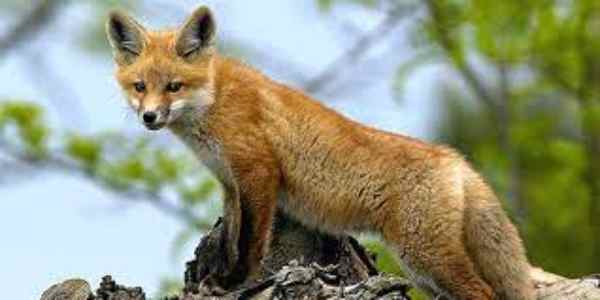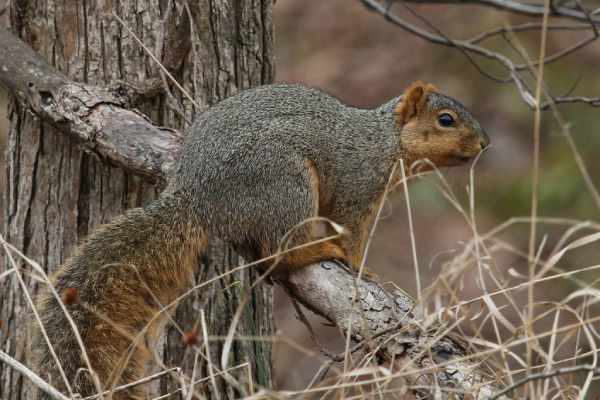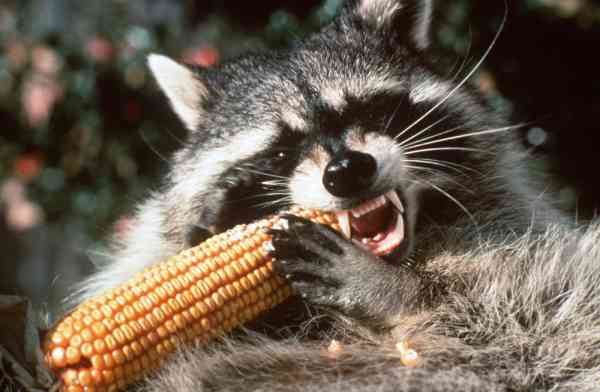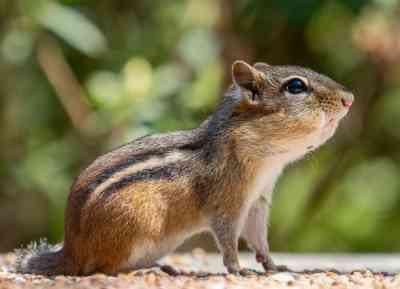Cranberries, celebrated for their tart taste and myriad health benefits, hold a special place in the world of nutrition and culinary delights. While humans have long harnessed the goodness of cranberries, did you know that various creatures from the animal kingdom also savor these ruby-red berries? This article embarks on an intriguing exploration of the diverse array of animals that enjoy munching on cranberries.
From feathered friends like birds to elusive mammals and even aquatic critters, we’ll unveil the surprising and delightful world of cranberry aficionados in the wild. Join us as we uncover the fascinating dietary habits of these creatures, shedding light on their role in cranberry propagation and ecosystem dynamics. Get ready to delve into the curious realm of animals that eat cranberries, offering a unique perspective on these beloved berries.
Table of Contents
Overview of Cranberries as a Popular Fruit:
Cranberries, small, round, and jewel-toned, hold a prominent place in the realm of popular fruits. Originating from North America, these vibrant berries have captivated palates globally with their distinct tangy flavor. Often associated with the traditional Thanksgiving feast, cranberries have evolved beyond the dining table into a versatile ingredient featured in an array of culinary delights.
Their tartness adds depth to both sweet and savory dishes, making them a favorite in sauces, salads, juices, and desserts. Moreover, cranberries have gained popularity due to their potential health benefits, recognized for their ability to support urinary tract health and provide a rich source of antioxidants. As a symbol of autumn and a staple during the holiday season, cranberries have become a beloved fruit, celebrated for their unique taste and versatility in the culinary world.

Description of Cranberries and Their Nutritional Value:
Cranberries, often termed “superfruit,” are small, glossy red berries with a distinctive tart taste. They belong to the Vaccinium family and are related to blueberries and bilberries. These berries are typically small in size, measuring around 1 cm in diameter and boast a firm texture. Cranberries are a nutrient-dense fruit, low in calories and fat but rich in vitamins, minerals, and antioxidants.
They are an excellent source of Vitamin C, providing a significant portion of the daily recommended intake in a single serving. Additionally, cranberries are known for their high content of dietary fiber and various phytonutrients that contribute to their potential health benefits. The antioxidants present in cranberries, including flavonoids and polyphenols, are believed to have anti-inflammatory and disease-fighting properties, making them a valuable addition to a balanced diet.
Black Bear (Ursus americanus):

Black bears (Ursus americanus) are opportunistic omnivores known to have a varied diet, especially during the fall when they prepare for winter. While their primary food sources are often plants, insects, and fish, they readily consume a variety of fruits, including cranberries.
During the cranberry harvest season, black bears can be observed foraging for these red berries. Cranberries provide an important nutritional supplement, aiding in fattening them up before the winter months when food may become scarcer. Their keen sense of smell allows them to locate patches of cranberries in their habitat, making this seasonal fruit a valuable part of their diet.
White-Tailed Deer (Odocoileus virginianus):

White-tailed deer (Odocoileus virginianus) are herbivores that typically graze on a variety of vegetation, and cranberries can be one of the many components of their diet. These deer often consume cranberries, especially when the berries are in season during the fall and winter.
While cranberries may not constitute a significant portion of their diet, they provide a natural and nutritious food source, aiding in their overall dietary needs. Deer play a role in dispersing cranberry seeds through their droppings, contributing to the propagation of cranberry plants within their ecosystem.
Red Fox (Vulpes vulpes):

Red foxes (Vulpes vulpes) are versatile carnivores with opportunistic feeding habits. While they primarily feed on small mammals, birds, and insects, they also incorporate fruits into their diet, including cranberries when available. Red foxes may consume cranberries when they come across them in their habitat, particularly during the autumn months when cranberries are in season. These berries can provide a source of hydration and essential nutrients for foxes, contributing to their dietary diversity and adaptability to changing food availability in their environment.
Gray Squirrel (Sciurus carolinensis):

Gray squirrels (Sciurus carolinensis) are well-known for their ability to forage and consume a variety of nuts, seeds, and fruits. Cranberries are among the fruits that may form part of their diet, especially if they inhabit regions where cranberries are abundant. Squirrels play a role in seed dispersal, and by consuming cranberries, they aid in the distribution of cranberry seeds within their habitat, promoting plant growth and propagation.
Raccoon (Procyon lotor):

Raccoons (Procyon lotor) are highly adaptable and opportunistic feeders known for their diverse diet. They primarily feed on a mix of plants, insects, small mammals, and fruits, including cranberries when accessible. Raccoons are more likely to consume cranberries during the fruiting season as a supplemental food source. Their flexible diet and keen sense of foraging make cranberries a potential item on their menu, adding to their nutritional intake and survival strategies.
Eastern Chipmunk (Tamias striatus):

Eastern chipmunks (Tamias striatus) are small, ground-dwelling rodents that are primarily herbivorous. They forage for a variety of seeds, nuts, fruits, and berries, including cranberries when available. During the fall season, when cranberries ripen, chipmunks may actively collect and consume them as part of their diet. The abundance of cranberries in their habitat during this time provides a valuable food source, aiding in their energy needs and overall sustenance.
Muskrat (Ondatra zibethicus):

Muskrats (Ondatra zibethicus) are primarily herbivorous rodents that inhabit aquatic environments. While their diet mainly consists of aquatic plants, they may occasionally consume cranberries if they grow in or near their habitats. Cranberries can be a seasonal supplement to their diet, providing a source of variety in their food intake.
Waterfowl (e.g., Ducks, Geese):

Waterfowl, including various species of ducks and geese, often feed on aquatic vegetation as a significant part of their diet. Cranberries, being a fruit that grows in wetland areas, are occasionally consumed by waterfowl. Ducks and geese may graze on floating or submerged cranberries, especially in areas where these berries are prevalent, making them a natural part of their foraging behavior.
Birds (Various species):

Numerous bird species are known to consume cranberries as part of their diet. While not a primary food source, birds such as songbirds and some waterfowl may feed on cranberries opportunistically, particularly during the fruiting season. Cranberries provide a nutritious and energy-rich addition to their diet, aiding in their overall well-being.
Human Impact and Conservation:
The surging demand for cranberries has led to a substantial impact on both the environment and the agricultural communities where they are grown. Commercial cranberry farming has seen expansion, often altering natural wetland habitats to create suitable growing conditions. This can disrupt local ecosystems, affecting wildlife and biodiversity. Additionally, the use of pesticides and fertilizers in cranberry cultivation can have adverse effects on water quality and surrounding ecosystems.
In response to environmental concerns, sustainable cranberry farming practices have gained traction. Many farmers are embracing organic farming methods, reducing the use of chemicals, and promoting biodiversity within cranberry growing areas. Wetland conservation efforts are also being implemented to preserve the unique ecosystems where cranberries naturally thrive.
Final Words:
Cranberries, with their vibrant hue and tangy taste, have become a staple in our diets and a symbol of various traditions. Their nutritional value and potential health benefits make them a sought-after fruit, enjoyed in a multitude of culinary creations. However, as we indulge in the pleasures of this crimson gem, it’s crucial to also consider the environmental impact of our consumption. Sustainable farming practices and responsible consumption can ensure the continued enjoyment of cranberries while preserving the delicate balance of our ecosystems. Let us relish the goodness of cranberries, appreciating both their delectable taste and the importance of mindful stewardship for a harmonious coexistence with nature.
Reference:
- https://shadowhabitat.org/native-of-the-month-wild-cranberry
- https://www.medicalnewstoday.com/articles/269142#:~:text=Many%20people%20consider%20cranberries%20to,function%2C%20and%20decreased%20blood%20pressure.

Jeevan Kodiyan
An animal enthusiast with an interest in zoology, studying the behavior and activities of animals in the wild habitat. I work on research projects related to species conservation and endangered species protection. I also leverage zoology to become an educator, educating others about the importance of protecting our natural environment and the beauty of animals in their natural habitats.









